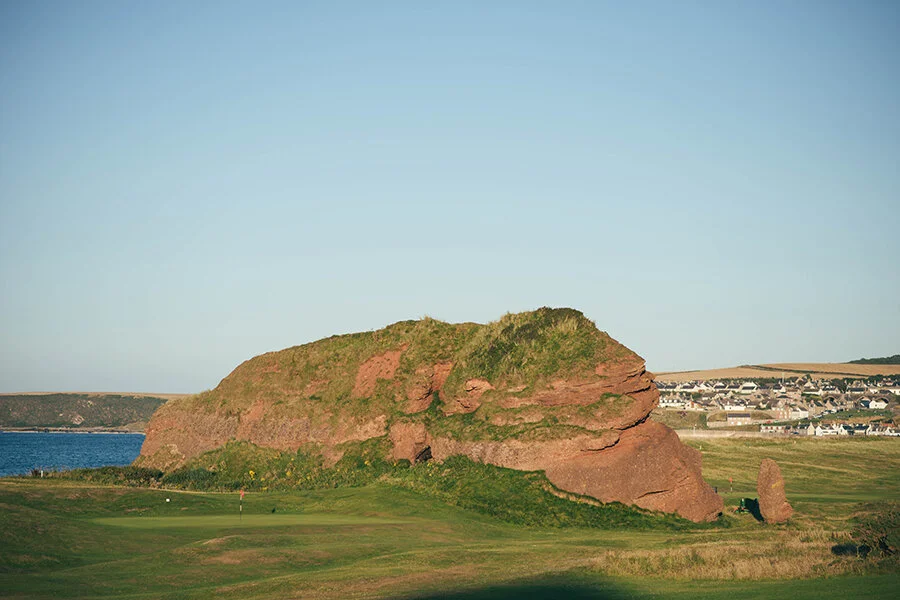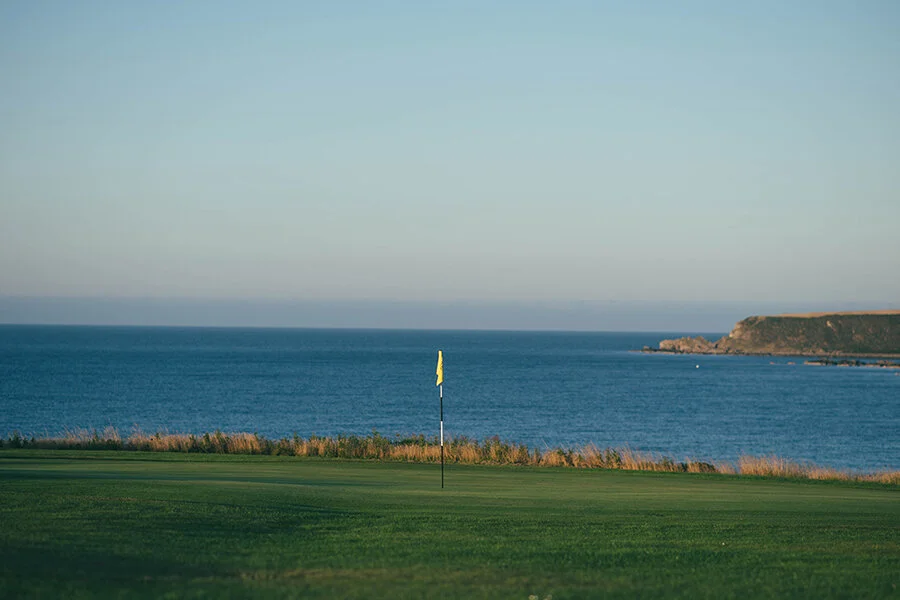Old Tom Trails - Cullen Links
BY MURRAY BOTHWELL
6 MINS READ
The historic coast of the north east of Scotland features many golf courses. Some sit close to the water’s edge, gaining and losing ground on a regular basis. Some are perched high on the top of vertical cliffs and others can be found nestled in valleys on the flood plains of substantial rivers that have their source in the mighty Cairngorm mountains to the south. None, however, can quite compare to Cullen. The land-bound, red sandstone sea stacks of a long-gone coastal margin now sit squarely in the middle of the golf course, providing either a stunning backdrop to your approach shots or a nerve-wrangling wall of rock to overcome on your way to the next green. Tucked into a red rock amphitheatre of fun, Cullen is highly entertaining, memorable for its stunning views and challenging, all at the same time.
It’s on record that in the time of Charles II, in 1641, two local gentlemen were reprimanded for playing golf at Cullen on a Sunday. Sabbath activities were frowned upon, and in some parts still are, but golfers of the Tom Morris years would often be reminded of his own reverend advice, retelling them if the players did not need a rest on a Sunday, the greens did. To this day, the Old Course at St Andrews is not open on Sundays for play, and it was only in 1941 that the other courses there were opened for play on the sabbath.
Tom Morris helped design the original Cullen Links course in 1881, where prior to that perhaps only three holes had existed. The players of the late 19th century had few hazards to encounter on his original course, and it was plain sailing from first to last being almost free from the sand bunkers which were found in most seaside courses. Tom had found little need of them: he found the same free-draining sandy soil and turf he enjoyed on his famous courses, and when you have cliffs of red sandstone perched in the centre of the fairway, and a beach close by, it’s easy to let nature give you a hand as a designer. This is most noticeable when the course’s iconic 400-million-year-old, 80-foot Boar Crag has to be navigated. The sweep of the adjacent Cullen beach and bay is matched by the sweep of the raised beach behind, exposing those same red sandstone cliffs. It’s like a large bite has been taken out of the coast, and a prettier location you’d be hard pushed to find.
In 1905 the course was extended to 18 holes through the courtesy of local landowner Lady Seafield by giving the club extra ground. The course at Cullen has always been popular amongst visitors and it was felt that if the club was to keep abreast of the times, it would have to be extended to 18 holes. A committee was formed and Mr Charlie Neaves, the Moray Golf Club professional at Lossiemouth, was called in to give advice as to the best method of laying out the ground. The cost was £60.00, and this large sum was met by subscriptions which were obtained locally and from visitors. Charlie created 10 new holes in total, removing one of the old holes and incorporating Tom’s other greens to make his full complement.
Cullen must lay claim to the most remarkable site for a golf course in Europe. Its features and layout are similar to the newer Covesea Links, further west along the Morayshire coast, which also sits nesting below sandstone cliffs and cream-coloured sea stacks. Cullen Links plays it’s outward nine close to, or on, the cliffs before doing an about-turn with the inward nine playing back at beach level. At 4,623 yards long, it incorporates many blind shots which were popular in golf course design at the turn of the century and manages to present more par threes than fours (ten) and one 511- yard par-5 at the 15th.
With great views of the coastline, Cullen Bay and the viaduct beyond sitting high over the town, the golfer can soak it all in from the par-3 7th, the signature hole of the course where almost every green can be seen from its high vantage point. Millennia of weathering have given these links the same turf and soil of the classic links courses of north east Scotland, and therefore Cullen stands as one of only 246 true links golf courses in the world. Even though it has the status as the shortest of all of them, it comfortably carries the responsibility and quality of those nearby championship links.






